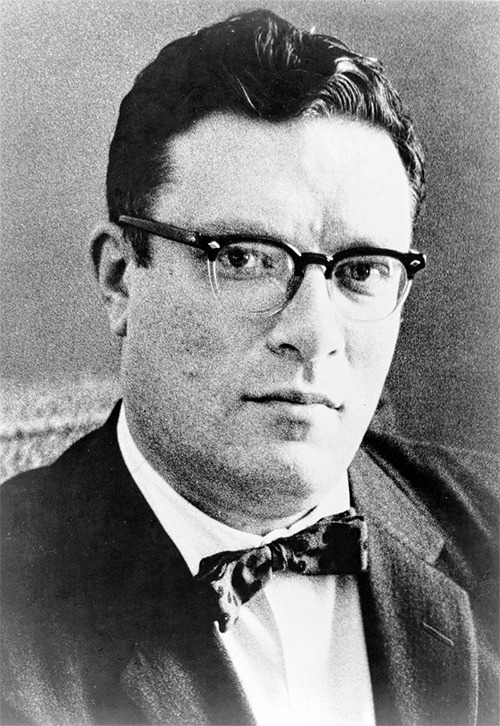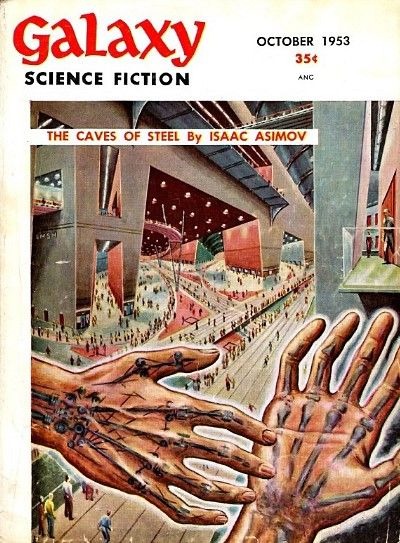In the realm of science fiction, there are always two names that will come up in fans’ minds when they are asked who the greatest sci-fi writers of all time are, and these names are Arthur C. Clarke and Isaac Asimov.
Isaac Asimov is widely regarded as one of the most important figures in robotics, even though he wasn’t particularly involved in the creation of robots. So, why is he considered instrumental in how robots are built today? We will know the answer as we get some details about Isaac Asimov and his philosophies about robotics.
Who was Isaac Asimov?
Isaac Asimov was born in Petrovichi, a rural locality in the Russian SFSR (Soviet Federative Social Republic). It is unknown when Asimov was actually born, but it is believed that he was born around October 4, 1919, and January 2, 1920. Despite the mysteriousness of his birthdate, Asimov celebrates his birthday on January 2.
In 1921, about 17 children (including Asimov) developed double pneumonia in Petrovichi, and he was the only one that survived. Two years later, Asimov’s family moved to the United States via Liverpool by boarding the RMS Baltic. Asimov’s family then stayed in Brooklyn, New York, where Asimov learned how to read at the age of five. Because of his intelligence, Asimov’s mother was able to convince a certain school to get him into first grade a year early while also claiming that Asimov was born on September 7, 1919. When he got into third grade, Asimov noticed the “error” in his birthdate and asked if it could be changed to January 2, 1920. By 1928, at the age of eight, he became a naturalized US citizen.
During the entirety of the Asimov family’s stay in the United States, they have run several candy stores where everyone in the family worked. It was in these candy stores that Asimov developed his interest in science fiction, as the stores would often have pulp fiction magazines that contained sci-fi stories.
At the age of 15, Asimov attended the City College of New York for a few days before getting a scholarship to enroll at Seth Low Junior College, which was a branch of Columbia University that was specifically designed to absorb some Italian-American and Jewish students who intended to get into Columbia College. Asimov originally applied for a zoology degree, but he eventually became a chemistry major after he refused to dissect an alley cat in class. When Seth Low Junior College closed in 1936, Asimov transferred to the Morningside Heights campus, which would eventually become the Columbia University School of General Studies, in 1939.
Asimov then applied for medical school two times but was rejected for both tries. Then, he enrolled in the graduate program in Chemistry at Columbia University in 1939. He was rejected for the graduate program initially, but he was soon accepted on a probationary basis. He completed the graduate program in 1941, and he would follow it up by earning a Doctor of Philosophy chemistry degree in 1948.
Before earning his doctorate degree, Asimov spent three years working as a civilian chemist at the Naval Air Experimental Station during World War II. In September 1945, Asimov was drafted into the army. However, in 1946, a bureaucratic error got Asimov and several soldiers out of the task force that was supposed to participate in Operation Crossroads. Asimov was then honorably discharged on July 26, 1946.
When he finished his doctorate, he soon joined the faculty at the Boston University School of Medicine in 1949, where he would be getting a $5,000 salary while teaching biochemistry. It was also around that time when Asimov began writing science fiction stories seriously, and because he was earning more money in writing rather than being a professor, he would, unfortunately, neglect some of his duties within the university, particularly in research. Because he couldn’t present research papers for the university, he was relieved from his teaching post in December 1957. However, because of his achievement in science fiction and science in general, he was awarded the title of full professor by the university on October 18, 1979.
Why was Asimov Important to Robotics?
While Asimov has written about countless topics related to science and technology, there is one particular subject that he wrote about that is remembered more than the others. This subject is mainly about robotics, specifically about the three laws that govern the creation and intelligence of robots. These three laws of robotics are:
- First Law – A robot may not injure a human or allow him or her to come to harm
- Second Law – A robot must obey orders given by humans except when the order contradicts the first law (like killing or harming another human)
- Third Law – A robot must protect its own life in such a way that it does not violate the first or second law.
The “Three Laws of Robotics” has appeared in some of Asimov’s stories, although it has become popular due to the Robot series, which has the classic sci-fi novel “I, Robot.” These three laws have been referred to and adopted in many forms of entertainment focused on robots, including movies, books, and TV shows. Besides fiction and entertainment, Asimov’s laws on robotics have also been a core factor in the ethics of artificial intelligence, which makes inventors think about the limits of how much intelligence they should give to robots.


